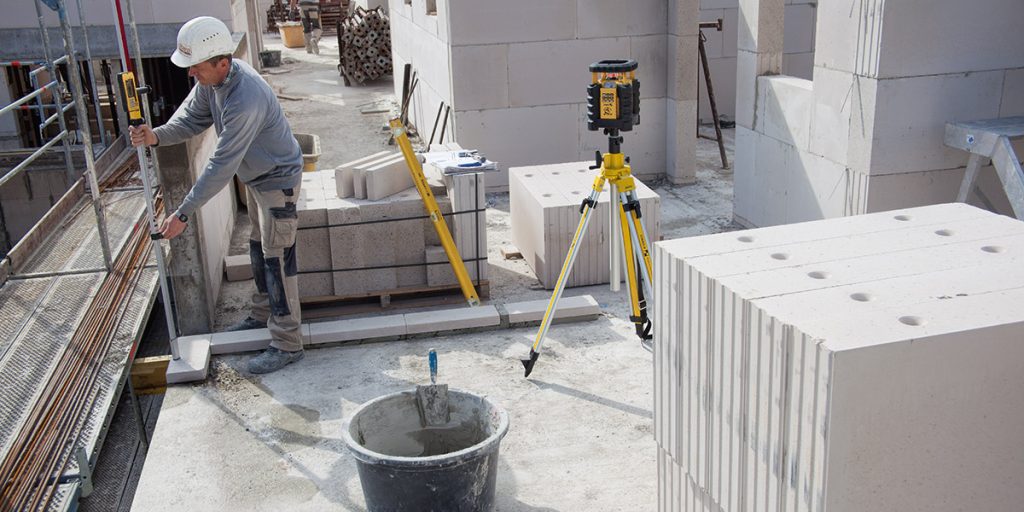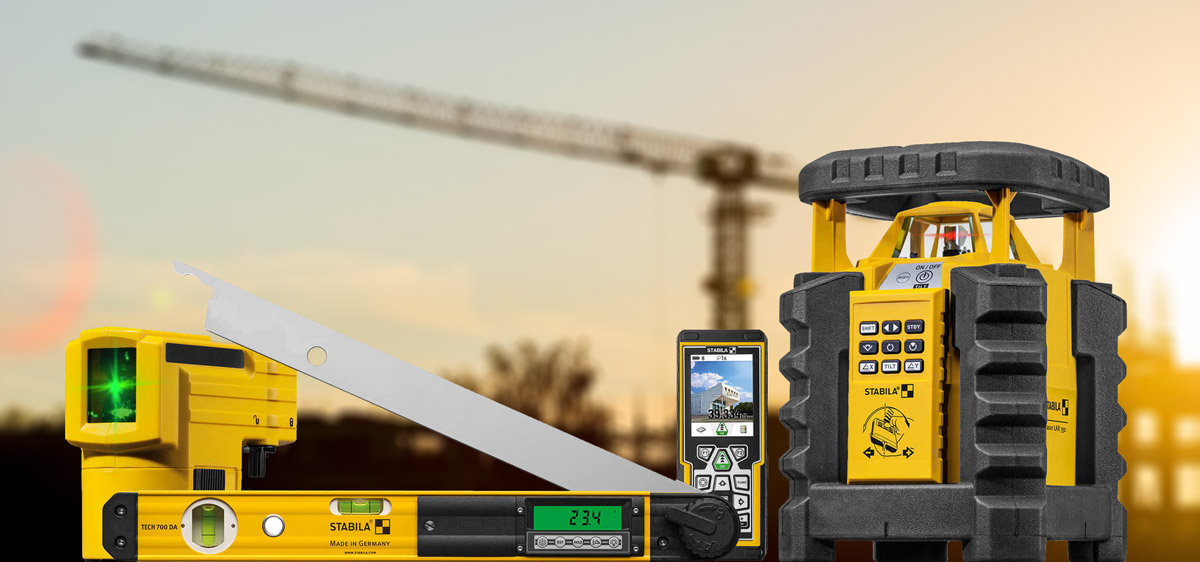Pick A Laser Level To Meet Your Jobsite Needs
At STABILA the motto of ‘How True Pro’s Measure’ is what drives the brand’s relentless work to continuously improve its range of tools, and since 1994 STABILA has been the brand to beat when it comes to providing high-quality laser levels and electronic tools that ensure ultimate accuracy and improved productivity on South Africa’s Jobsites. Today our laser levels have become a must-have on many jobsites because of their ease of use and high accuracy levels.
Today, STABILA has a whole host of laser levels and digital measuring tools that have been built with the end-user in mind. Having the wrong tools for your application not only causes user frustrations, but can easily result in inaccuracies and rework down the line. This article will outline how to select the correct type of laser for your application and give useful considerations on how to make an informed choice when purchasing a laser.
Table of Contents
How Does a Laser Level Work
A laser level is effectively a diode that is energized to repel energy over two mirrors, one being a full mirror and the other a half mirror. The light passes out over the half mirror and is then focused through a series of lenses. The quality of a laser line, in terms of its focus and clarity, will depend on the quality of the lenses. Higher quality lenses will produce a clear and more visible laser line or dot, whereas lower quality lenses will have the opposite result. Once the laser is focused, the light will pass through a prism or lenses which direct the light to spread out and form a line or divert the light in a 90-degree direction.
There are two different types of laser levels, point and line lasers – both of which help establish an accurate reference over a given working area and greatly increase your productivity levels when it comes to applications ranging from alignment, grading, and levelling work, amongst others. Lasers offer users productivity improvements over traditional methods since they are quick and easy to set up and allow for one-person operation.
Light vs Dark Working Conditions
If you’re working in a low light situation over a short distance of 30 m or less, a line laser is suitable as the laser line will be visible. Should you be working in bright surroundings and over larger distances a red line laser will need to be coupled with a receiver. Different lasers have different diodes and lenses, and it is based on the quality of the lenses and diodes that determines whether your laser will consume more or less energy. High quality diodes and lenses project a laser dot or line over further distances and with better clarity, whereas the opposite is true for lower quality diodes and lenses.
When working in bright areas or outside in sunlight it becomes very hard, if not impossible, to see laser lines or a dot, this is when a receiver is most useful. The laser receiver allows users to pick up the line and show the user on a screen where the marking point is. The user must take note that receivers do differ. Not all receivers can pick up red and green lasers, and not all receivers can pick up rotational lasers, as well as line lasers.

Over What Distance
If you work over a distance greater than 30 m, in bright surroundings, you will get a more accurate result by using a rotational laser. The reason for the difference in laser distance capabilities is related to the way in which the light is transferred to your surroundings. A line laser is a dot that has been split by a lens to form a line. The line will be at its brightest in the middle and fade away towards its sides. A rotational laser only uses the dot and thus can shine further as the light is not dispersed.
When choosing your laser level ask yourself “over what distance will I be working?” If the answer is less than 30 m you can use a line laser knowing that the most accurate and brightest spot will be the center of the line or cross if more than one line is present.
A rotational laser is better when working over larger distances and is suited to work both in and outdoors, and as they are generally sold with a receiver this greatly increases the distance over which you can work. A rotational laser when coupled with a receiver can work over extremely long distances of up to 400m radius.
Red vs Green Lasers
In South Africa, red lasers are traditionally the laser of choice due to cost considerations. This is because red diodes are manufactured on a larger scale in comparison to green laser diodes, thereby making red laser diodes more cost-effective to produce. The payoff for opting for a red laser is that red lasers are four times less visible than their green laser counterparts, and are more difficult to see with the naked eye in bright working conditions and over larger distances. Green lasers are sharper and easier to see, but consumer more energy in order to give you a clearer laser line that is visible over larger distances. Green lasers therefore use twice as much battery energy compared to red lasers.
The question of when to use which laser comes down to affordability versus productivity. A red laser level is less expensive but does not shine as far, whereas green laser levels can be seen over a further distance but have a shorter battery life. In terms of your working environment – green laser lines are more suited to bright areas, whereas one can opt for a red laser when working in darker areas and over a shorter distance.

Line or Dot Laser
When levelling items such as drawer runners, a picture frame, a door, or tiling walls and floors – a line laser is very useful because you can follow the line easily to ensure a level application. For these sorts of applications, using a rotational laser would not be as effective or fast to work on as the light keeps moving in a rotational manner making it quite difficult to see the line. Where one can use a rotational laser for these sorts of applications is if the rotational laser has added functionality that enables it to draw a line over a short distance, as in the case with the STABILA LAR350. A rotational laser is most suited over a large distance exceeding 30 m or more where a user needs to determine the level of a point or take precise measurements and levels over a long distance.
One-Person Operation
If you work alone on a Jobsite, choose a laser level that can be adjusted with a remote. This will help you align the laser level easier and faster while working at a distance from the unit as the remote allows you to align two points, slow down or speed up the rotations of a laser line, or draw a line and move that line left or right. Some laser levels even let you set inclines on the x and y-axes via a remote. It is with these additional functionality settings where a rotational laser really comes into its own provididing value to users.
Level of Accuracy Required
It’s a pearl of age-old wisdom in laser level technology that the cheaper the laser the less accurate it usually is. Most lasers have at least a 1mm/m accuracy level, but highly accurate lasers have a 0.01mm/m accuracy level. The most accurate laser is generally a rotational laser as the light has better focus and less dilution. Line lasers are generally less accurate because the dot is defused into a line making the ends less visible.
An incorrect measurement is the most expensive mistake on a Jobsite and not choosing high-quality measuring, leveling, and positioning tools can cause major rework down the line. Let us help you find the ideal laser for your work by getting in touch with our Product Specialist to set up a Jobsite demonstration of our range of lasers.









